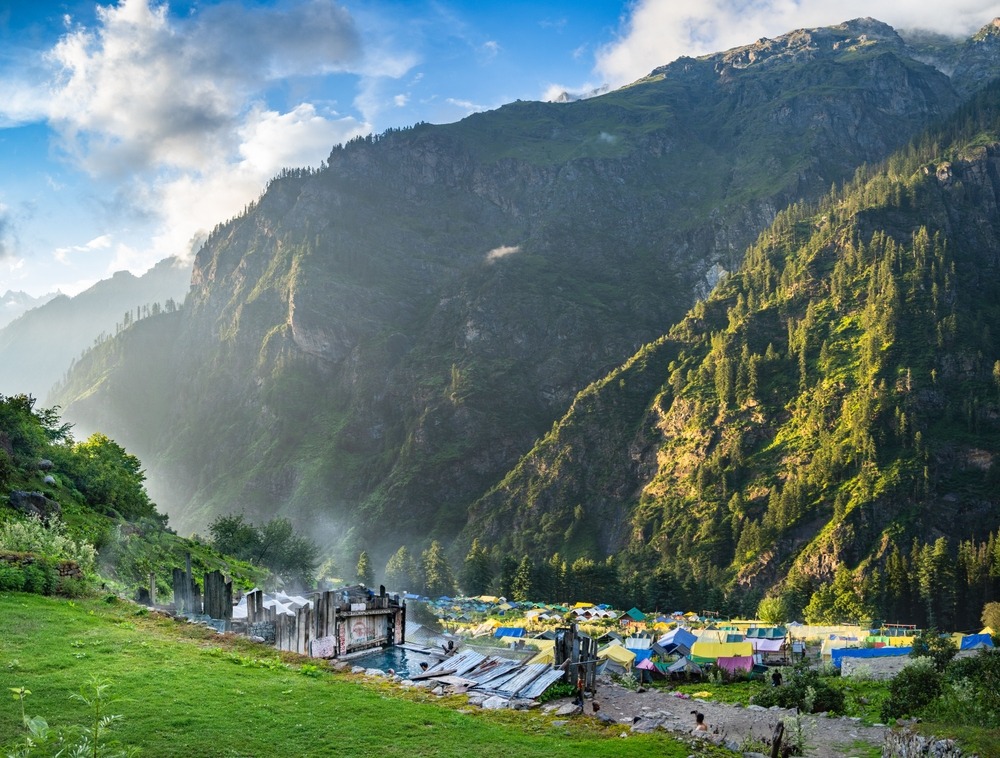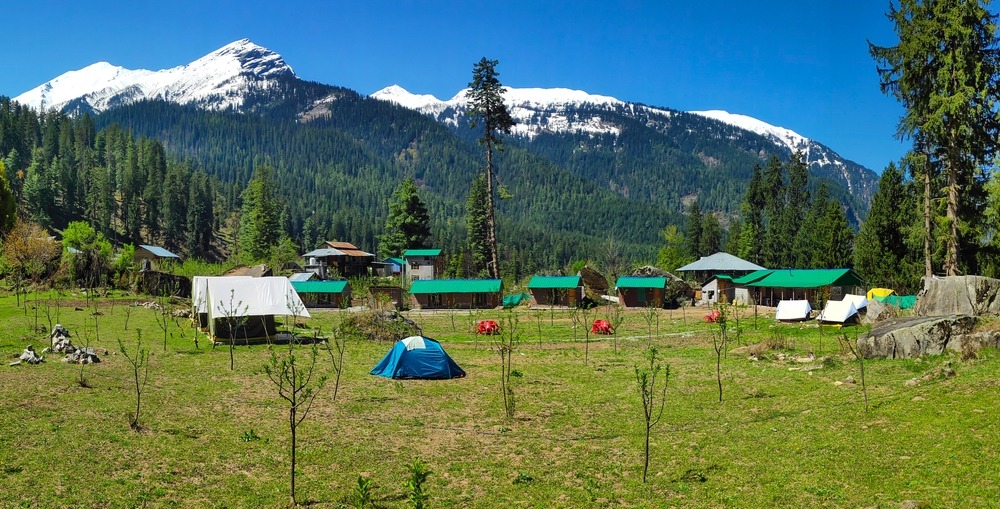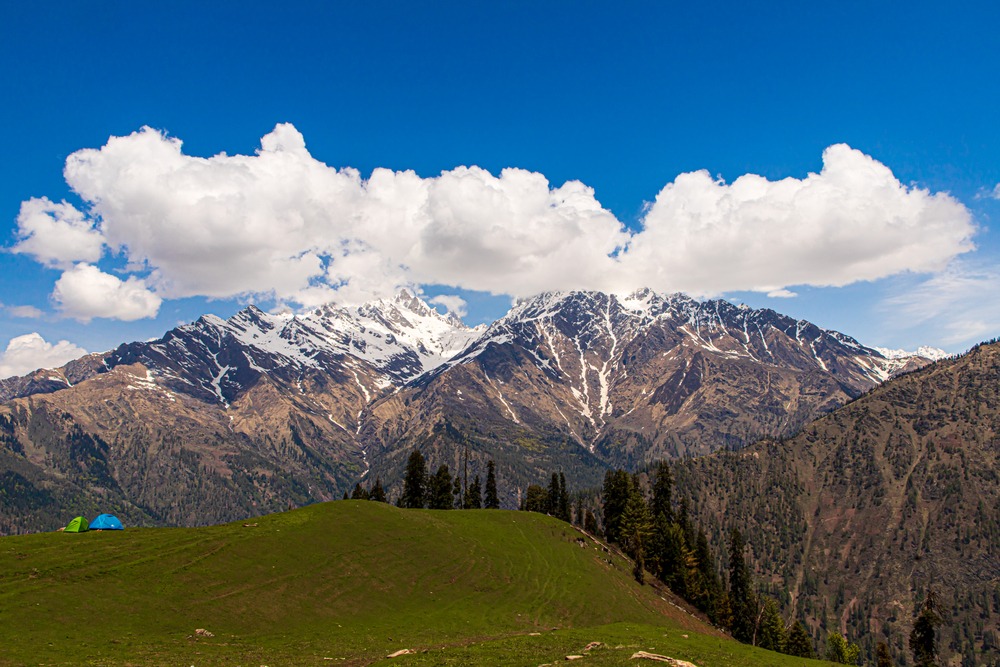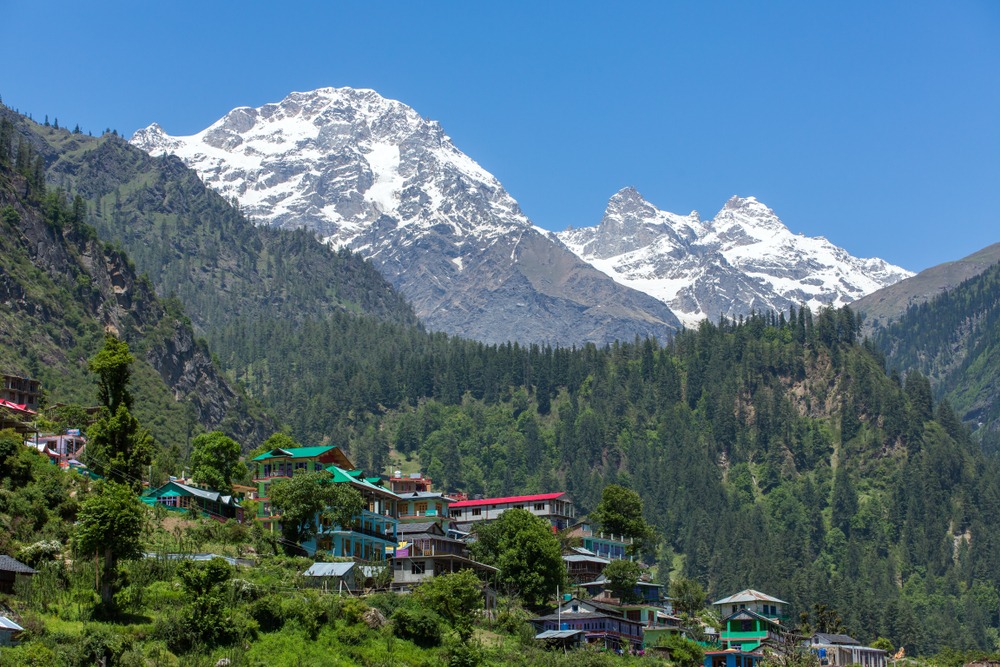1. Introduction For a Beauty Of Kasol Kheerganga
Embark on an odyssey through the Himalayas as we explore the enchanting Kasol Kheerganga Trek. Join me as we delve into the secrets of this mystical land, uncovering hidden gems and creating memories that will last a lifetime.
2. Getting Ready For Kasol Kheerganga

Before we set foot on this epic journey, let’s ensure we’re prepared both physically and mentally. Engage in regular exercise to strengthen your body, practice mindfulness to prepare your mind, and gather your essentials for the adventure of a lifetime.
Embarking on the Kasol Kheerganga Trek requires physical stamina and mental fortitude. Begin your preparation by incorporating regular exercise into your routine, focusing on activities that build endurance and strengthen your leg muscles. Hiking, jogging, and cycling are excellent ways to improve your cardiovascular fitness and prepare your body for the demands of trekking in the Himalayas.
In addition to physical preparation, it’s essential to cultivate a mindset of resilience and adaptability. Trekking in the mountains can present unexpected challenges, from changes in weather to unforeseen obstacles on the trail. By practicing mindfulness and embracing a positive attitude, you’ll be better equipped to navigate these challenges with grace and composure.
Gather your gear and supplies well in advance of your trekking date to ensure you have everything you need for a safe and enjoyable journey. Invest in high-quality hiking boots that provide ankle support and traction on varied terrain. Layer clothing to accommodate fluctuating temperatures, and don’t forget essentials like a waterproof jacket, sun protection, and plenty of water and snacks to keep you fueled along the way.
3. Choosing the Right Time For Kasol Kheerganga
Timing is everything when it comes to trekking, and the Kasol Kheerganga Trek is no exception. Let’s discover the best seasons to embark on this expedition, ensuring optimal weather conditions and breathtaking vistas along the way.
May through June and September through November are the ideal times to start the Kasol Kheerganga Trek. During these months, the weather is relatively stable, with clear skies and moderate temperatures conducive to trekking. The spring and autumn seasons also offer stunning views of blooming flowers and colorful foliage, adding an extra layer of beauty to your trekking experience.
Avoid trekking during the monsoon season, typically from July to August, as heavy rainfall can make the trails slippery and hazardous. Winter trekking is possible but requires additional preparation due to colder temperatures and the possibility of snowfall at higher elevations. If you choose to trek during the winter months, be sure to pack appropriate cold-weather gear and check trail conditions beforehand.
If you’re seeking a reputable company to facilitate your Kasol Kheerganga Trek adventure, look no further than The Searching Souls. Renowned for their expertise in organizing trekking expeditions across the Himalayas, The Searching Souls offers comprehensive packages tailored to meet the needs of every adventurer.
With The Searching Souls, you can rest assured that your trekking experience will be safe, enjoyable, and memorable. Their team of experienced guides and support staff are intimately familiar with the trails and terrain of Kasol Kheerganga, ensuring a smooth and seamless journey from start to finish.
4. Selecting the Route
Two paths diverge in the mountains, each offering its own set of challenges and rewards. Let’s navigate through the options, choosing the route that resonates with our spirits and fuels our sense of adventure.
The Kasol Kheerganga Trek offers two main routes to reach the summit: the traditional route from Barshaini and the longer route from Tosh village. Both routes traverse scenic landscapes and offer unique experiences along the way.
The traditional route from Barshaini is the most popular and well-trodden path, taking approximately 5-6 hours to reach Kheerganga. The trail winds through picturesque villages, lush forests, and rocky terrain, offering panoramic views of the Parvati Valley along the way. This route is suitable for trekkers of all skill levels and provides ample opportunities to interact with local villagers and fellow adventurers.
For those seeking a more off-the-beaten-path experience, the route from Tosh village offers a longer but equally rewarding trekking adventure. This route takes approximately 7-8 hours to reach Kheerganga and passes through remote hamlets, pristine meadows, and dense forests teeming with wildlife. While the trail is more challenging and less developed than the Barshaini route, it offers a sense of seclusion and tranquility that’s perfect for nature lovers and seasoned trekkers.
5. Packing Essentials Required For Kasol Kheerganga

In the realm of trekking, every item in your backpack tells a story. From sturdy boots to cozy sleeping bags, let’s curate our essentials, ensuring we’re equipped for every twist and turn along the trail.
Packing smart is essential for a successful trekking adventure, as your backpack will be your lifeline in the mountains. Here are some essential items to include in your packing list for the Kasol Kheerganga Trek:
- Hiking Boots: Invest in a pair of sturdy hiking boots with ankle support and good traction to navigate varied terrain comfortably.
- Clothing: Layer clothing to accommodate changing weather conditions, including a waterproof jacket, thermal layers, and moisture-wicking clothing.
- Backpack: Choose a lightweight and durable backpack with padded straps and ample storage space for your gear and supplies.
- Sleeping Bag: Opt for a lightweight sleeping bag suitable for camping in mountainous terrain, rated for cold temperatures if trekking during the winter months.
- First Aid Kit: Pack a comprehensive first aid kit with essentials such as bandages, antiseptic wipes, pain relievers, and blister treatment.
- Water and Snacks: Carry plenty of water and high-energy snacks to stay hydrated and fueled throughout the trek.
- Navigation Tools: Bring a map, compass, or GPS device to navigate the trails and stay on course.
- Sun Protection: Pack sunscreen, sunglasses, and a wide-brimmed hat to protect against sunburn and UV exposure at higher elevations.
- Headlamp or Flashlight: Ensure you have a reliable light source for navigating trails in low-light conditions or during early morning or evening treks.
- Personal Items: Don’t forget essentials like a camera, toiletries, and any personal medications or hygiene products you may need.
6. Accommodation Options
As the sun sets behind the mountains, we seek shelter amidst nature’s embrace. Explore the various lodging options available along the trekking route, from cozy guesthouses to starlit campsites under the vast Himalayan sky.
After a day of trekking through the rugged terrain of the Himalayas, finding a comfortable place to rest and rejuvenate is essential. Fortunately, the Kasol Kheerganga Trek offers a variety of accommodation options to suit every budget and preference.
1. Guesthouses and Lodges: Along the trekking route, you’ll find a network of guesthouses and lodges offering basic accommodation and amenities for weary trekkers. These establishments typically provide dormitory-style rooms or private rooms with shared bathrooms, as well as meals and snacks for purchase. Guesthouses are a popular choice for budget-conscious travelers seeking a comfortable place to spend the night without the hassle of setting up camp.
2. Camping: For those craving a closer connection to nature, camping under the starry sky is an unforgettable experience. Several designated campsites are scattered along the trekking route, offering flat ground for pitching tents and access to basic facilities such as toilets and water sources. Camping allows you to immerse yourself fully in the tranquility of the mountains, with the soothing sounds of nature lulling you to sleep each night.
3. Homestays: For a more immersive cultural experience, consider staying in a local homestay hosted by families in the nearby villages. Homestays offer a unique opportunity to connect with the local community, learn about traditional customs and lifestyles, and enjoy home-cooked meals made with locally sourced ingredients. Staying in a homestay provides insight into the rich cultural heritage of the region and fosters meaningful connections with the people who call the Himalayas home.
No matter which accommodation option you choose, be sure to book in advance during peak trekking seasons to secure your spot. Additionally, pack essential items such as a sleeping bag, sleeping pad, and tent if you plan to camp, and bring a headlamp or flashlight for navigating campgrounds at night.
7. Planning Your Meals
A trekker’s journey is fueled by more than just determination; it’s sustained by nourishing meals that replenish the body and uplift the spirit. Let’s delve into the art of meal planning, embracing local flavors and culinary delights along the way.
One of the joys of trekking in the Himalayas is indulging in hearty and delicious meals prepared with locally sourced ingredients. Whether you’re refueling after a long day on the trail or enjoying a leisurely picnic amidst breathtaking scenery, there are plenty of culinary delights to savor along the Kasol Kheerganga Trek.
1. Local Cuisine: Embrace the flavors of Himachali cuisine as you sample traditional dishes made with fresh produce and aromatic spices. From piping hot bowls of thukpa (noodle soup) to crispy pakoras (vegetable fritters) served with tangy chutneys, the local eateries along the trekking route offer a diverse array of culinary delights to tantalize your taste buds.
2. Street Food: Treat yourself to a taste of local street food as you wander through the bustling markets of Kasol and nearby villages. Sample piping hot momos (dumplings) filled with savory fillings, crispy aloo tikkis (potato patties) served with tangy sauces, and sweet treats like jalebi (deep-fried sweets) and kulfi (Indian ice cream). Street food vendors are a ubiquitous presence in the region, offering affordable and delicious snacks to fuel your adventures.
3. Packable Snacks: When trekking in remote areas where food options may be limited, it’s essential to pack lightweight and portable snacks to keep you energized throughout the day. Consider packing trail mix, energy bars, dried fruits, nuts, and granola for quick and convenient snacks on the go. These snacks provide a source of sustained energy and help prevent hunger pangs during long treks between meal breaks.
4. Hydration: Staying hydrated is crucial when trekking in the mountains, especially at higher elevations where the air is drier and dehydration can occur more quickly. Carry an ample supply of water and electrolyte-rich beverages to replenish fluids lost through sweat and exertion. Consider investing in a reusable water bottle or hydration bladder to reduce plastic waste and ensure you have access to clean drinking water throughout your trek.
5. Dietary Restrictions: If you have dietary restrictions or food allergies, be sure to communicate your needs to restaurant staff and food vendors along the trekking route. Many establishments are accustomed to accommodating dietary preferences and can provide alternative options or modify dishes to suit your needs. Additionally, consider packing a supply of specialty food items or snacks to supplement meals and ensure you have plenty of options to choose from.
By planning your meals thoughtfully and embracing the local cuisine, you’ll not only fuel your body for the rigors of trekking but also savor the rich culinary heritage of the Himalayas.
8. Staying Safe
In the wild embrace of the mountains, safety is paramount. Let’s arm ourselves with knowledge, preparedness, and caution as we navigate the rugged terrain and unpredictable elements of the great outdoors.
Trekking in the Himalayas offers unparalleled opportunities for adventure and exploration, but it also comes with inherent risks and challenges. From changing weather conditions to treacherous terrain, it’s essential to prioritize safety and take necessary precautions to mitigate potential hazards along the way.
1. Acclimatization: When trekking at high altitudes, it’s crucial to allow your body time to acclimate to the thinner air and reduced oxygen levels. Ascend gradually, taking regular breaks and staying hydrated to prevent altitude-related illnesses such as altitude sickness or pulmonary edema. Listen to your body’s signals and descend to a lower elevation if you experience symptoms of altitude sickness, such as headaches, nausea, or dizziness.
2. Weather Awareness: The weather in the mountains can be unpredictable, with conditions changing rapidly from sunshine to rain, snow, or fog. Stay informed about weather forecasts and trail conditions before setting out on your trek, and be prepared to adjust your plans accordingly. Carry appropriate clothing and gear for a variety of weather scenarios, including waterproof layers, warm clothing, and sun protection.
3. Navigation Skills: Familiarize yourself with the trail route and carry navigational tools such as a map, compass, or GPS device to help you stay on course. Pay attention to trail markers, landmarks, and signage along the route, and consult with local guides or fellow trekkers if you’re unsure about directions or trail conditions. Avoid trekking alone, especially in remote or unfamiliar areas, and always inform someone about your itinerary and expected return time.
4. Hydration and Nutrition: Proper hydration and nutrition are essential for maintaining energy levels and preventing fatigue and dehydration during long treks. Drink plenty of water and electrolyte-rich beverages throughout the day, and snack on high-energy foods such as nuts, dried fruits, and energy bars to sustain your stamina. Avoid consuming untreated water from natural sources such as streams or rivers, as it may contain harmful bacteria or parasites.
5. Emergency Preparedness: In case of an emergency or unexpected situation, it’s essential to be prepared with a well-stocked first aid kit and knowledge of basic first aid procedures. Carry essential supplies such as bandages, antiseptic wipes, pain relievers, and blister treatment, and know how to administer basic medical care for common injuries or ailments. Additionally, carry emergency contact information, including the contact details of local authorities, emergency rescue services, and medical facilities in the area.
By prioritizing safety and preparedness, you can minimize risks and enjoy a safe and fulfilling trekking experience in the Himalayas.
9. Enjoying the Journey
Amidst the challenges and triumphs of the trek, let’s not forget to savor the moments that take our breath away. From sunrise vistas to chance encounters with fellow adventurers, let’s revel in the joy of the journey.
Trekking in the Himalayas is not just about reaching the summit; it’s about embracing the journey and immersing yourself fully in the beauty of nature. Take time to pause and appreciate the stunning vistas, the vibrant colors of wildflowers, and the symphony of sounds that fill the air. Engage with fellow trekkers and locals you encounter along the way, sharing stories, laughter, and camaraderie that enrich your trekking experience.
Embrace the spirit of adventure and curiosity as you explore new landscapes and discover hidden treasures around every bend in the trail. Whether you’re marveling at ancient temples nestled in the mountainside, dipping your toes in icy mountain streams, or gazing up at a star-filled sky, allow yourself to be present in the moment and soak in the magic of the mountains.
Capture memories through photography, journaling, or sketching, preserving moments that will transport you back to this extraordinary adventure for years to come. Share your experiences with friends and loved ones, inspiring others to embark on their own journeys of discovery and exploration.
Above all, cherish the journey and the connections you forge along the way, for it is these moments of joy, wonder, and connection that make trekking in the Himalayas truly unforgettable.
10. Kheerganga Highlights

At the summit of our adventure lies a hidden oasis, where warm waters flow and weary souls find solace. Join me as we bask in the glory of Kheerganga’s hot springs, a sanctuary amidst the rugged beauty of the Himalayas.
After days of trekking through the pristine wilderness of the Parvati Valley, reaching the summit of Kheerganga feels like stepping into a surreal paradise. Nestled amidst towering pine trees and snow-capped peaks, Kheerganga is renowned for its natural hot springs, believed to possess healing properties and spiritual significance.
The hot springs of Kheerganga are fed by natural geothermal springs that bubble up from deep within the earth, creating pools of warm, mineral-rich water that soothe tired muscles and rejuvenate the body and mind. Legend has it that the springs were created by Lord Shiva himself, who bathed in the healing waters after meditating for thousands of years.
As you soak in the warm waters of the hot springs, surrounded by the serenity of the mountains, all your cares and worries melt away. Feel the tension in your muscles dissolve, replaced by a sense of profound relaxation and inner peace. Allow yourself to surrender to the healing embrace of the springs, letting the therapeutic waters wash away fatigue and stress, leaving you feeling refreshed, revitalized, and renewed.
In addition to the hot springs, Kheerganga offers plenty of opportunities for exploration and adventure. Take a leisurely stroll through the lush meadows surrounding the springs, marveling at the diverse flora and fauna that call this pristine wilderness home. Discover hidden waterfalls cascading down moss-covered rocks, and listen to the symphony of bird songs that fill the air.
For the more adventurous souls, embark on a trek to the nearby Shiva Temple, perched atop a rocky outcrop overlooking the valley below. The trek offers breathtaking views of the surrounding mountains and valleys, as well as a chance to pay homage to Lord Shiva in this sacred pilgrimage site.
Whether you’re seeking relaxation, adventure, or spiritual renewal, Kheerganga offers an experience unlike any other. Soak in the healing waters, immerse yourself in the beauty of nature, and let the magic of Kheerganga envelop you in its embrace.
11. Conclusion
As our journey comes to an end, let us reflect on the memories we’ve created, the challenges we’ve overcome, and the beauty we’ve witnessed along the way. Until we meet again on the trails, may your adventures be plentiful and your spirit forever wanderlust-filled.
FAQs
1. What is the best time to trek to Kasol Kheerganga?
The best time to trek to Kasol Kheerganga is during the months of May to June and September to November when the weather is pleasant and the trails are relatively dry.
2. How challenging is the Kasol Kheerganga Trek?
The Kasol Kheerganga Trek offers a moderate level of difficulty, suitable for both beginners and experienced trekkers. However, certain sections of the trail can be steep and challenging, so it’s essential to be adequately prepared.
3. Are there accommodation options available along the trekking route?
Yes, there are various accommodation options available along the trekking route, including rustic guesthouses and campsites. You can choose the option that best suits your preferences and budget.
4. Is it safe to trek to Kasol Kheerganga alone?
While trekking alone is not recommended, it is generally safe to trek to Kasol Kheerganga as long as you take necessary precautions, such as staying on marked trails, informing someone about your itinerary, and trekking with a knowledgeable guide if possible.
5. What should I do in case of an emergency during the trek?
In case of an emergency during the trek, stay calm and assess the situation. If medical assistance is required, seek help from fellow trekkers or guides. It’s also essential to carry a first aid kit and emergency contact information with you at all times.
Also Read More Topics like – What Makes the Goechala Trek a Top Choice for Nature Lovers

